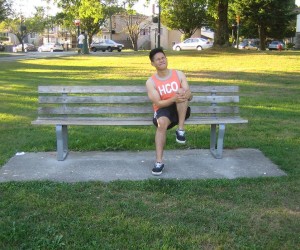A lateral ligament sprain involves a rip or tear to the ligament on the exterior of the knee. This is likely to occur after sustaining a direct strike to the interior part of the knee.
The lateral ligament or lateral collateral ligament (LCL) connects the femur to the upper part of the fibula in the lower leg. Take note that the ligament is a strong slender cord of collagen fibers and responsible for stabilizing the outside part of the knee.
This ligament is prone to injury in sports from direct impact to the inner surface of the knee joint such as in football or rugby.
What are the indications?

The indications of a sprain to the lateral collateral ligament varies from mild to full rupture of the ligament. A lateral ligament sprain is categorized as grade 1-3 depending on the extent of the injury.
Grade 1
- Tenderness on the outside part of the knee over the ligament
- Minor or no swelling
- If the joint is flexed at 30 degrees and pressure is placed on the interior which strains on the ligament, pain or discomfort is produced but laxity of the joint is absent.
Grade 2
- Evident tenderness on the outside part of the knee over the lateral ligament
- Some swelling is present over the ligament
- Once the knee is stressed to check for grade 1 symptoms, there is pain and some laxity in the joint but the knee could not be bent sideways completely
Grade 3
- Full tearing of the ligament
- Pain tends to vary and might be less than a grade 2 sprain
- If the knee is stressed, there is significant laxity of the joint
- Instability of the knee
Management of a lateral knee ligament sprain
The treatment is the same for all injuries to the knee ligaments. The PRICE method (protection, rest, ice, compression, elevation) is used if swelling is present. The individual should take a break from activities that can worsen the injury. A hinged knee brace is worn to support the joint especially for grade 2 and 3 injuries.
The primary task of the doctor is to assess the extent of damage. This is done by placing pressure on the interior joint surface and matching up its laxity to the uninjured knee. In serious cases, an X-ray or MRI might be required.
For grade 1 and 2 injuries, conservative measures are usually suggested. These are carried out for up to 8 weeks and can include laser or ultrasound therapy, NSAIDs, massage and a rehabilitation program that includes strengthening and proprioceptive and balance exercises. Supportive taping for the lateral ligaments can provide protection, not just after the injury but when resuming normal activity.
For grade 3 sprains, especially in cases where there is an ACL or PCL tear, surgery is required to prevent instability in the future. This might involve stitching or suturing the ripped ends of the LCL or reconstruction of the ligament.
Quick Note / Disclaimer
The material posted on this page on lateral knee ligament sprain is for learning and educational purposes only. To learn to recognize and manage sprains, register for a first aid and CPR course with Ottawa First Aid.
